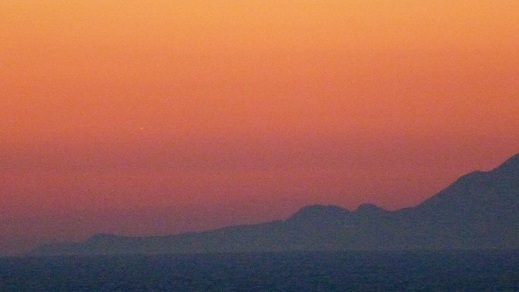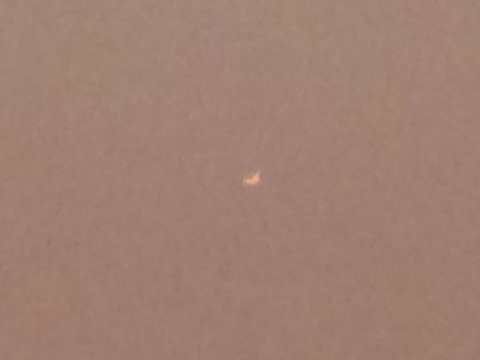 |
Transit of Venus Across the Sun - 2012 |
 |
By Alexander J. Yee |
(Last updated: June 6, 2012)
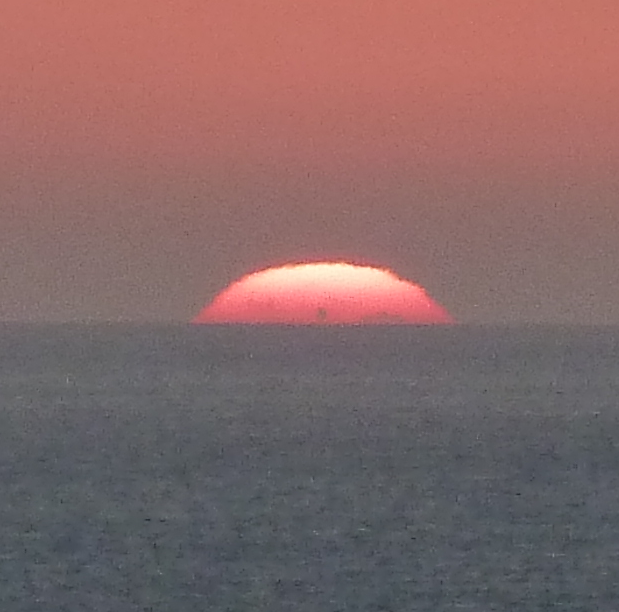 |
| Sunrise over Chania, Greece - Deck 12 Mariner of the Seas - June 6, 2012 Venus can be seen as a blurry dot just above the horizon. (click for full image) |
Here's my first article that's not about numbers. Or is it?
Although I was never really fanatical about astronomy, I often read a lot about astrophysics and such. (black holes, relativity, etc...)
Then during spring break in March 2012, I noticed two very bright stars in the sky next to the moon. By the looks of it, they couldn't have been stars. They were way too bright. Then when I Googled for the star charts, I found that they were Jupiter and Venus - shining high and bright in the evening sky.
When I looked around a bit more I quickly found two more major astronomical events that were coming: An annular solar eclipse on May 20th and a transit of Venus across the Sun on June 5th.
Both would be visible in the United States, hmm... But then I learned that I'd be out of the country for both events. I'll miss the solar eclipse for sure, but they're common if you're willing to travel. So it wasn't too much of a loss.
The transit however... won't happen again until 2117... I'll most likely be dead by then... :(
The transit was visible on June 5th or 6th depending on where you were in the world. On those dates, I'd be on a Mediterranean cruise - which meant that it'd be visible for a hour or so at sunrise... It was the first time I woke up early in a while!
March became April and April became May. Every night I walk down Green Street to get dinner, I would see Jupiter and Venus high and bright in the sky. Jupiter eventually disappeared into the sunset as it reached conjunction behind the Sun. But Venus remained blindingly bright in the sky.
Even after the school year ended and I left with my family for vacation, Venus stood high and bright in the sky:
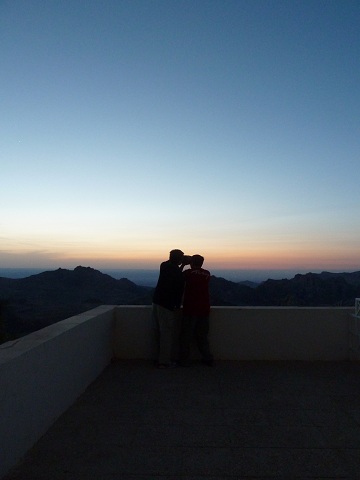 |
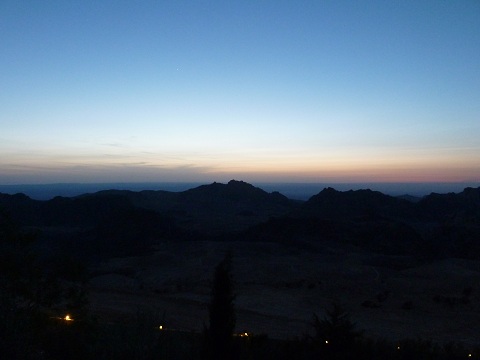 |
| My Dad and I looking at Venus through binoculars. Petra, Jordan - May 21, 2012 |
Click to view the full image. Venus is visible high and slightly left. Petra, Jordan - May 21, 2012 |
During the early days of our trip, I tested the binocular projection method I read about for viewing the sun. I was able to see sunspots - good enough to see Venus. :)
Even just 5 days before the transit, Venus was still (barely) visible above the horizon immediately after sunset. Goes to show how quickly it plunges into inferior conjunction. At this point, it is not visible to the naked eye. These images were taken at maximum zoom on my cheapo camera...
Transit Day -> First Setup: On the railing...
Finally transit day. I get up at 5:15 AM local time as the ship was pulling into Chania, Greece. At 6:08 AM, the sun began to rise above the horizon.
I snapped a few pictures of the sunrise. Although I didn't see Venus in any of them on the camera, the first one (at the top of the page) apparently did have the blurry silouette of Venus. After that, the glare of the sun as it rose higher above the horizon prevented the camera from properly focusing.
At first, my Dad and I tried looking at the sun through solar eclipse shades - but we couldn't see Venus. It was too low and dim on the horizon. But we did see it an hour later when it was higher and brighter.
Then we setup the binocolar projection method:
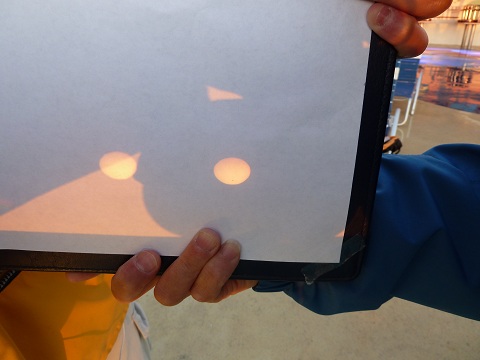 |
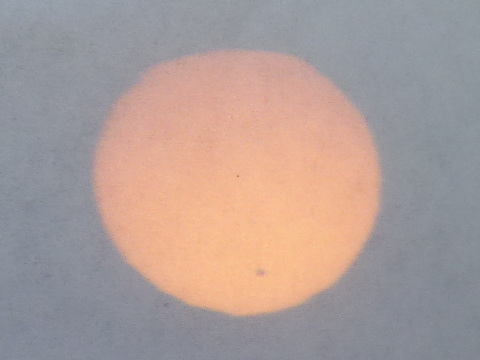 |
| My Dad holding up a book blank page to project the image. | Blurry, but Venus is clearly visible at the bottom. |
Initially we were holding both the binoculars and the paper "screen" by hand - which was pretty unsteady. So we moved to a table.
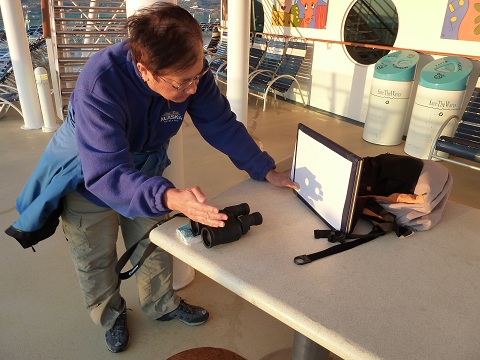 |
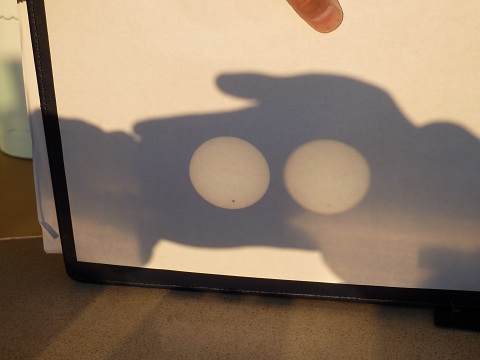 |
| My Dad tweaking the setup on a table on deck 12 at the back of the ship. | Ah... the image is much clearer. |
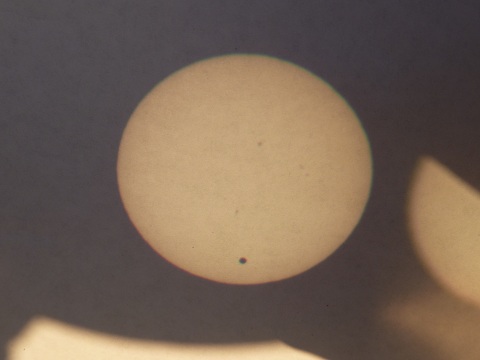 |
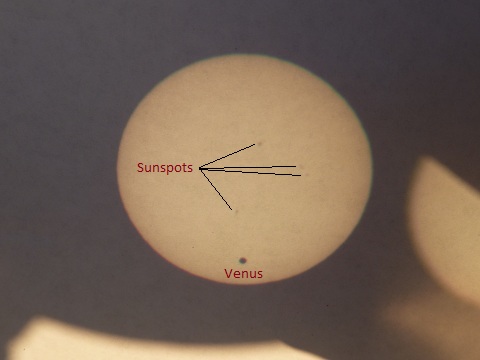 |
| Hey look! We can also see sunspots. :) Those are the same 4 sunspots seen in all the other publicized images of the transit. | |
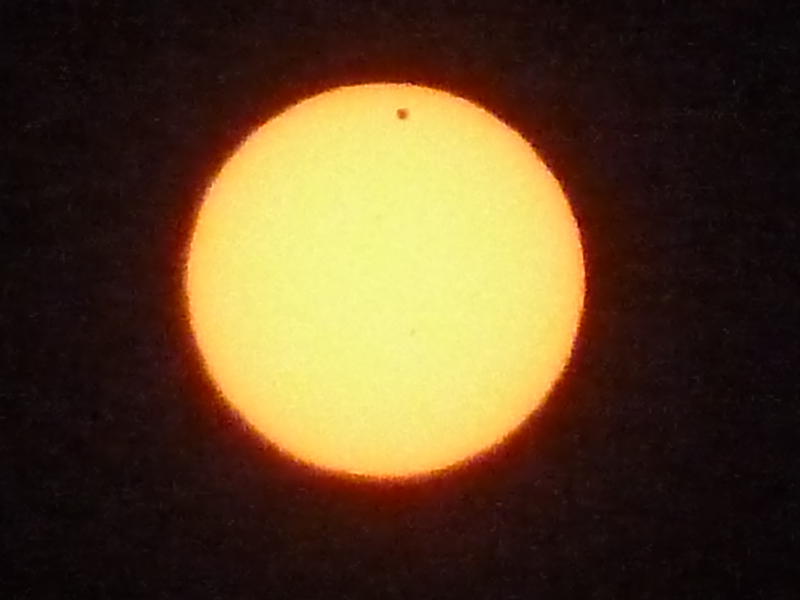 |
| Here I aimed my camera directly at the sun through a pair of solar eclipse shades... |
Then we moved to our room...
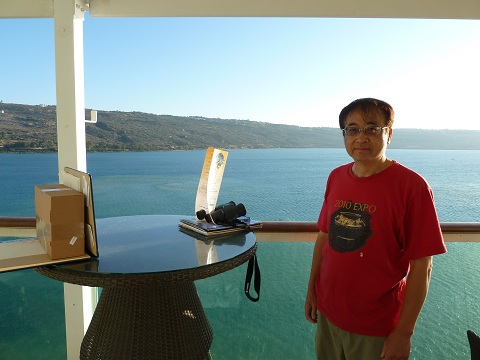 |
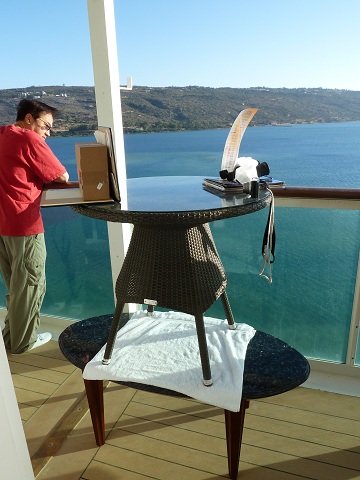 |
| In our room... with a slightly more lavish setup. Note that I'm not in any of these pictures since I was the one taking the pictures. |
|
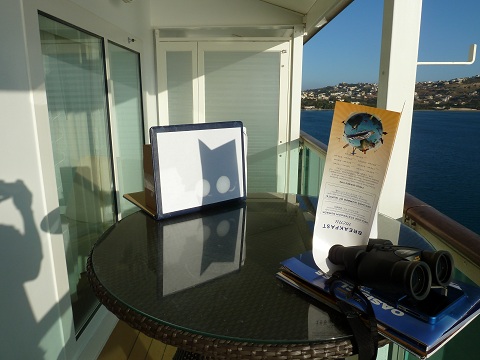 |
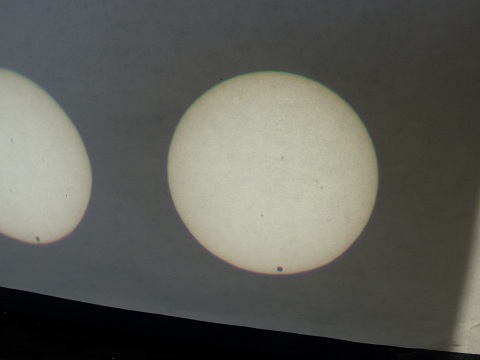 |
| Zoom in the image and you can see Venus even from back here. | Our clearest image. The 4 distinct are sunspots are very apparent. |
Given the crudeness of our methods and equipment, I didn't think that I'd be able to see the Black Drop Effect at all. But to our surprise... here it is!
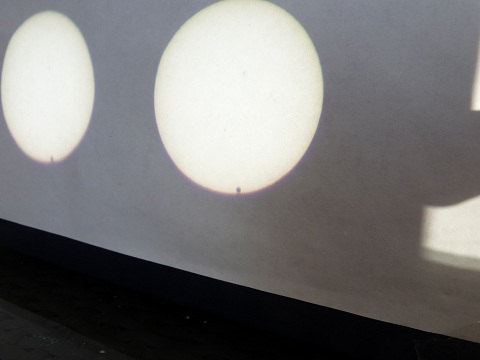 |
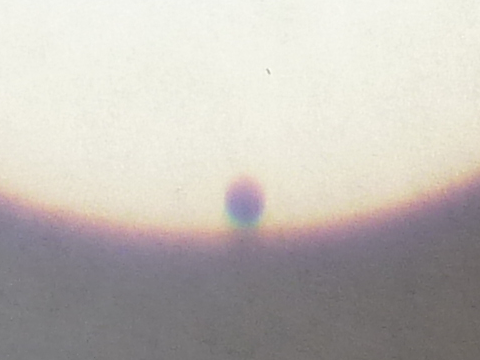 |
| As the end of the transit nears... | ... the "Black Drop Effect" becomes more and more noticable. |
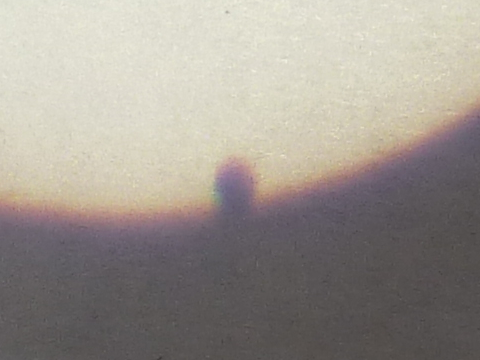 |
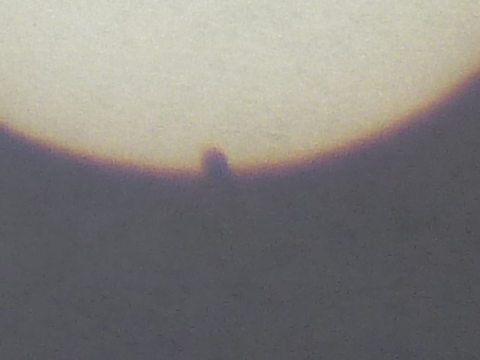 |
All good things must come to an end...
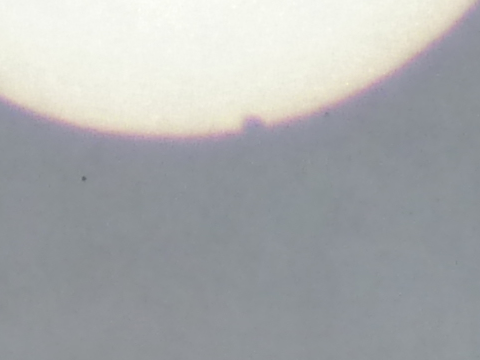 |
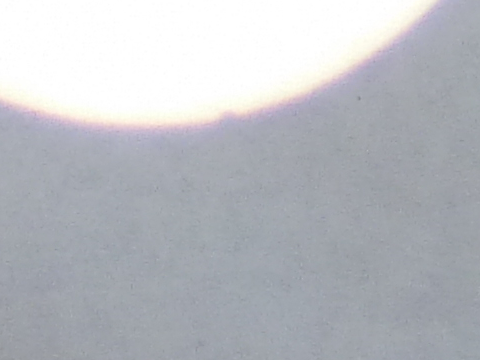 |
At 7:55 AM, Venus disappeared back into the darkness. Only 105 years till the next one...
Contact me via e-mail. I'm pretty good with responding unless it gets caught in my school's junk mail filter.
